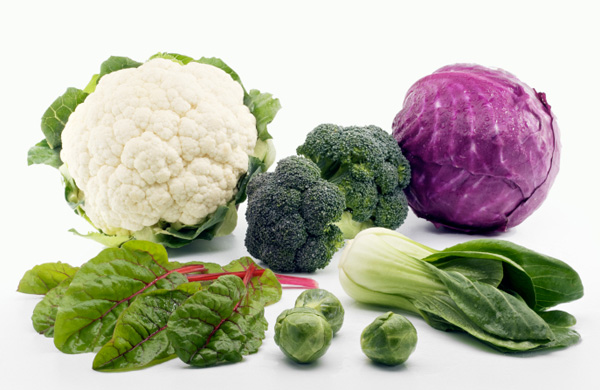By Janis Jibrin, M.S., R.D., lead nutritionist for TheBestLife.com
We all know that we should be trying to reach our daily vegetable goal (that’s at least three servings). But it’s not just the quantity that’s important—the types of vegetables you pile on your plate can make a big difference to your health. Your goal: Eat at least one vegetable from each of the following three groups daily. Do so and you’ll reap some serious health and nutrition benefits.

Cruciferous Vegetables
Examples: Arugula, bok choy, broccoli, broccoli sprouts, Brussels sprouts, cabbage, cauliflower, collard greens, kale, kohlrabi, mustard greens, radishes, rutabaga, turnips, turnip greens, and watercress.
Why they’re so good for you: Cruciferous vegetables contain compounds called glycosinolates, which the body converts to powerful cancer fighters. They’re a triple threat against cancer: They act as an antioxidant to destroy carcinogens, they block carcinogens from landing on DNA and causing mutations that lead to cancer, and they help halt the spread of cancer.
Try This: Asian Cabbage Salad
Dark, Leafy Greens
Examples: Any of the greens listed above under “cruciferous,” as well as chard, dandelion greens, oak leaf lettuce, spinach and sweet potato leaves.
Why they’re so good for you: One reason I’m pushing the dark greens is for their lutein content—it’s the same pigment found in the eye and it helps prevent macular degeneration, a leading cause of blindness. Most dark greens are also rich in beta carotene, which is linked to a reduced risk for cancer and fewer skin wrinkles.
Try This: Healthy Spinach and Artichoke Dip

Red Tomatoes
Examples: All varieties, including cherry, grape, heirloom, vine-ripened and hothouse.
Why they’re so good for you: They get their red color from lycopene, a powerful antioxidant that’s linked to a reduced risk for heart disease. In the winter and spring, when it’s nearly impossible to find a decent fresh tomato, don’t hesitate to use canned (opt for “no salt added”). In fact, canned tomatoes and tomato paste have even more lycopene than fresh. Tomatoes—both fresh and canned—are also rich in vitamin C.
Try This: Roasted Tomato and Basil Soup
Also Read:
Kale Chips: Easy to Make and Shockingly Scrumptious

